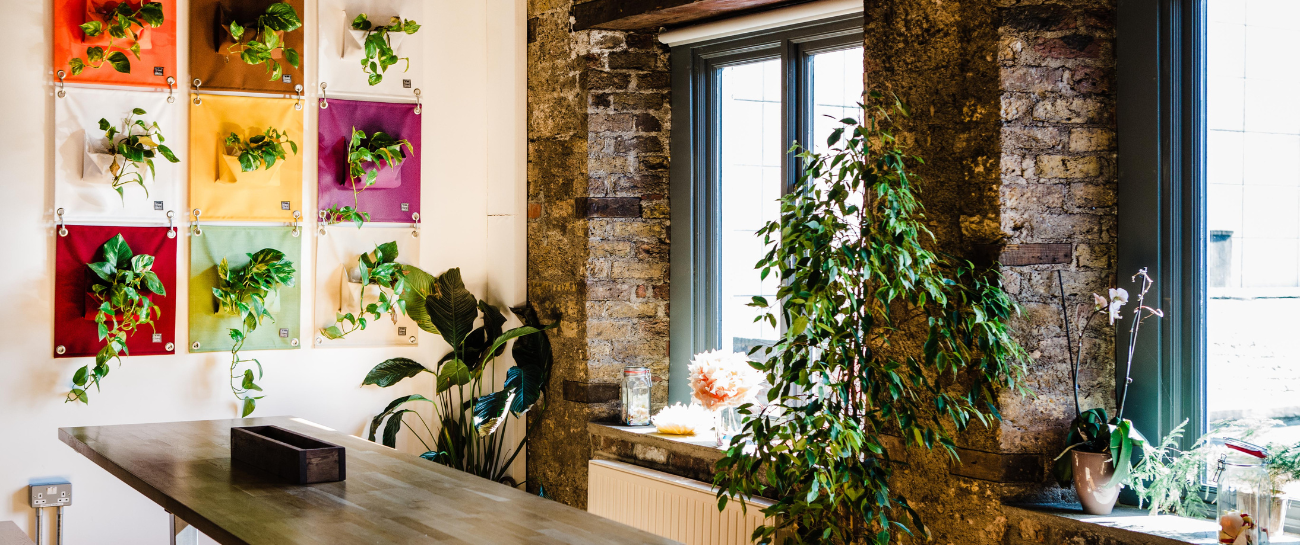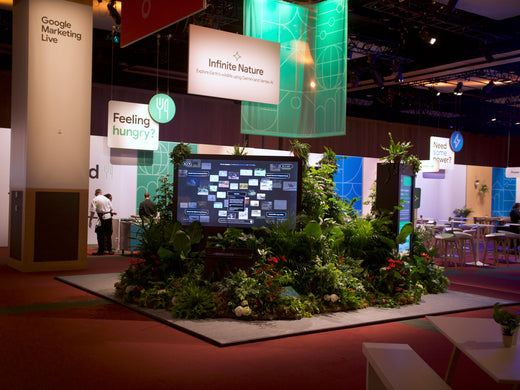Indoor plants have become more than a passing trend; they're part of how we design, live, and even care for our wellbeing.
Whether you're looking to brighten a room, purify the air, or add a sense of calm, houseplants have taken root in modern living spaces everywhere. But how did this all begin? How did we go from wild plants in jungles, forests, and fields to beautiful indoor companions like monstera, ferns, and succulents?
Let’s dive into the fascinating history of houseplants, from their ancient origins to their resurgence as must-have interior design essentials.

The Hanging Gardens of Babylon: The Birthplace of Houseplants?
To explore the history of houseplants, we’ve got to take a trip back—way back—to one of the Seven Wonders of the Ancient World. The Hanging Gardens of Babylon, dating back to around 600 BC, are often considered the first known example of humans cultivating plants for pleasure and beauty rather than just food. Imagine cascading greenery, exotic flowers, and lush trees arranged on tiered terraces, creating a stunning oasis in the heart of ancient Mesopotamia. While historians debate whether these gardens were purely myth or reality, bringing nature into human-made spaces began here.
This was likely the first large-scale instance of humans intentionally cultivating plants indoors (or at least in an enclosed garden space). Plants like figs, palms, and fruit-bearing trees were not just practical—they were ornamental. The Babylonian elite enjoyed nature inside their palaces, setting the stage for how we enjoy our indoor jungles today.

Monastic Gardens: A Sanctuary of Calm (and Plants!)
Fast-forward to the Middle Ages, and we find monks in Europe taking up the cause of plant cultivation—this time within the walls of monasteries. These were some of the earliest cultivators of indoor plants, growing them for both spiritual and medicinal purposes. Monks tended to herb gardens, often including potted plants inside their quarters for healing, aromatherapy, and religious rituals. Monasteries became quiet, green spaces that reflected both spirituality and knowledge, helping to preserve the art of horticulture through centuries of upheaval.
This monastic tradition of keeping indoor plants for healing is something we can still appreciate today. Herbs like rosemary, lavender, and thyme are common houseplants that look beautiful and serve medicinal and aromatic purposes, much like they did in the stone-walled sanctuaries of medieval Europe.

The Victorian Plant Craze: How Houseplants Became Fashionable
Houseplants really started to grow in popularity (pun intended!) during the Victorian era. This was a time when Britain was expanding its empire, bringing back exotic plants from tropical regions like India, Africa, and Southeast Asia. Suddenly, a wider variety of plants was available, and wealthy Victorians quickly embraced this as a sign of status and sophistication.
Glass conservatories, or “winter gardens,” were built to house these tropical beauties, allowing people to enjoy greenery even in the colder months. Ferns became particularly popular, and the so-called “Fern Fever” (or Pteridomania, for all the Latin lovers out there!) took hold of the nation. Every home had to have a fern, and the more unusual or rare, the better. Even the humble aspidistra—a resilient and easy-to-care-for plant—became a staple of Victorian homes.
But why did Victorians become so obsessed with houseplants? Part of it was aesthetic—they loved the natural, romantic look that plants brought to their homes. But there was also a practical side. Plants were believed to purify the air, and in the days before central heating and modern insulation, they helped add moisture to dry indoor environments. Sounds familiar, right? We’re still bringing plants into our homes for the same reasons today!

Modern-Day Houseplants: Bringing the Outdoors In
Fast forward to the 20th and 21st centuries, and houseplants have become more popular than ever. After the post-war period, houseplants grew in popularity again in the 1970s, when homes were filled with macramé plant hangers, spider plants, and peace lilies. However, unlike the Victorian obsession with rare and exotic species, the houseplant boom of the 1970s was more about ease and accessibility. Plants became part of everyday homes, and hardy species that were easy to grow and forgiving of neglect became the stars.
This trend saw another resurgence in recent years, thanks to the rise of urban living, where outdoor garden spaces are limited. Millennials, in particular, have taken a deep interest in houseplants—whether it's to balance out screen time, create a calming home environment, or simply enjoy the beauty of nature indoors. Popular plants like succulents, cacti, and the ever-trendy monstera deliciosa are Instagram icons in their own right, with #PlantParenthood booming in popularity.
But it’s not just about aesthetics or the cool factor—houseplants are scientifically proven to have mental and physical health benefits. From improving air quality to reducing stress, plants have been shown to help people focus, increase productivity, and even speed up recovery from illness. No wonder they’ve become so popular in workspaces and homes alike!
Indoor Plants That Have Stood the Test of Time
As we’ve seen, houseplants have been part of human history for centuries, and some of the plants we love today have been grown indoors for hundreds, if not thousands, of years. Here are a few that have truly stood the test of time:
- The Aspidistra (Cast-Iron Plant): A Victorian favourite, the Aspidistra was valued for its hardiness. It could survive low light, irregular watering, and cold drafts, making it the perfect choice for homes during the Industrial Revolution when conditions weren’t ideal for more sensitive plants. It’s still a great choice today for plant owners who might not have a green thumb!
- Ferns: Ferns have been cultivated since the Victorian era and are still a popular choice today. The Boston fern, with its feathery, arching fronds, has been gracing homes for over a century and continues to be a beautiful, lush addition to any room.
- Monstera Deliciosa: Though it only rose to mainstream popularity in the 20th century, monstera deliciosa, with its large, holey leaves, has become one of the most sought-after plants in the world. Originally from tropical rainforests in Central America, it’s now a fixture in homes and apartments across the globe.
- Spider Plant (Chlorophytum comosum): The spider plant became hugely popular in the 1970s and remains a favourite today. Known for its air-purifying properties and easy care, this plant makes a fantastic addition to homes, especially for beginners.
- Aloe Vera: Dating back to ancient Egypt, where it was used for medicinal purposes, aloe vera is both functional and decorative. Its spiky, fleshy leaves are great for modern minimalist decor and sun-filled spots in your home.

Bringing Nature Home, One Plant at a Time
Houseplants are much more than just décor—they reflect our connection with nature, our desire for beauty, and even our sense of wellness. From ancient Babylon to Victorian England to today’s thriving indoor jungles, the history of houseplants is rich and fascinating, and it’s clear that they’ve been a beloved part of human life for millennia.
As plant lovers here at Plant Store, we’re passionate about helping you find the perfect plant for your home—whether you’re looking for something low-maintenance like the resilient aspidistra or a statement plant like the stylish monstera.
Wherever your green thumb takes you, we’re here to help make your indoor space a little greener, one plant at a time.
Happy planting! 🌿





